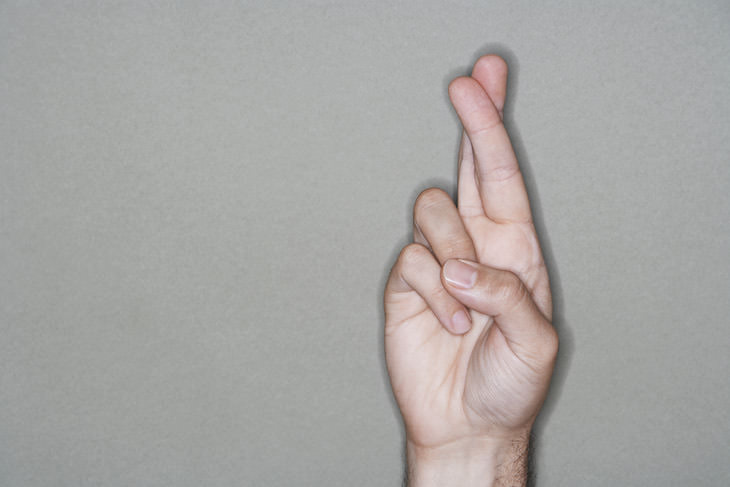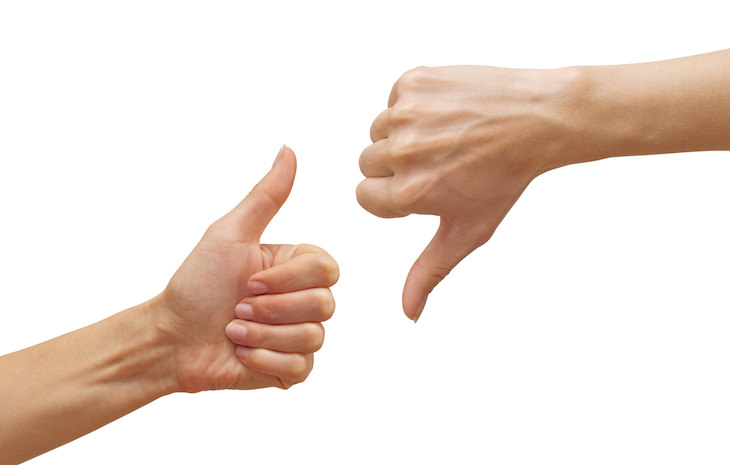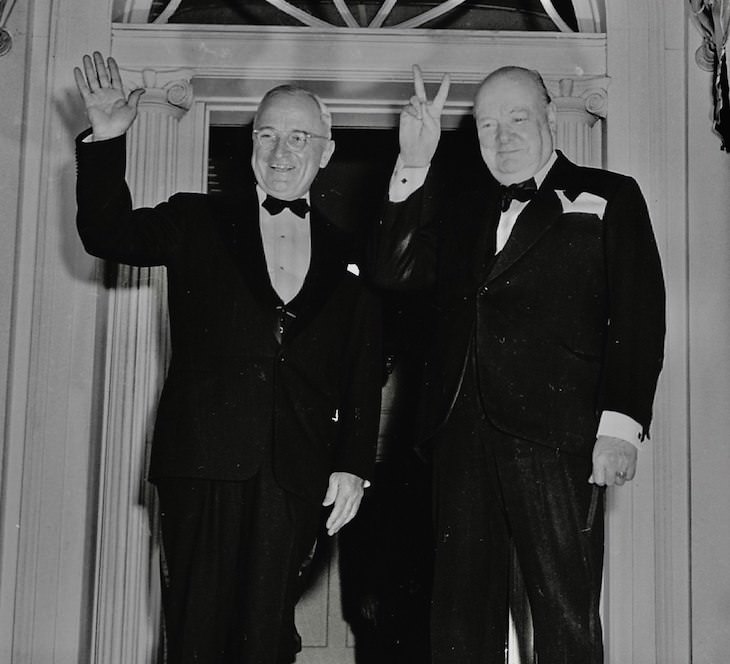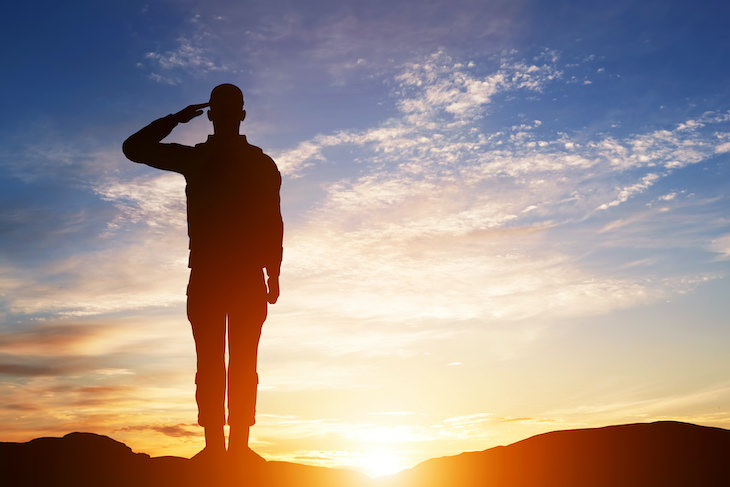
Some hand gestures, like the thumbs up as a way to signify approval or crossed fingers as a symbol of hope, are so ingrained in our culture that we hardly give them a second thought. Now that texting and emojis are becoming more widespread than ever, throwing in these gestures over text is so simple, that in a way, they’re more popular than ever. But just like language, these gestures have histories and backstories and it turns out that they are quite fascinating. We rounded up 8 popular hand gestures and their meanings, some darker or more surprising than others!

Up until the breakout of Covid-19 and social distancing entering our lives, you could say the handshake was one of the most popular gestures in the world. Whether you’re greeting someone for the first time, closing a deal, or making amends after an argument, shaking hands was the go-to gesture. People put so much meaning into handshakes that they can even affect the first impression you leave - firm and confident or limp and passive, etc. But how did the handshake even come to be, not to mention become such a common occurrence?
It turns out that the handshake goes way back to antiquity. One of the first depictions of it appears in Homer's ‘Illiad’ and ‘Odyssey’, in relation to pledges and displays of trust. The true origins of the gesture are murky, but the most popular theory is that it began as a way of conveying peaceful intentions. By extending their empty right hands, strangers could show that they were not holding any weapons, and the up-and-down motion was supposed to dislodge any knives or daggers that might be hidden up a sleeve. Historians believe that the daily use of the handshake in the modern world was popularized by 17th-century Quakers, who favored it over tipping a hat. By the 1800s, it was a commonplace custom.
Related: Will The Handshake Be Obsolete After the Pandemic?

When we really hope for something to happen, we cross our fingers, or at least say the words “fingers crossed”. This gesture has been around for centuries, and it was originally an ancient pagan custom that required two people to cross their fingers, according to the BBC. They believed their wishes would be kept safe if they kept their fingers crossed until they came true. This idea of capturing good luck also explains the practice of tying a string around a finger.
Crossed fingers are associated with early Christians, too. When faced with prosecution, they would often cross their fingers to invoke the power of Christ’s crucifixion. It is also believed that persecuted Christians would cross their fingers behind their back to absolve themselves from the lies they told their tormentors, and that is why we cross our fingers behind our back when making a promise we don’t intend to keep.

These popular gestures that are now used in the form of emojis and ‘like’ buttons have rather dark origins. The tradition comes from referees in Ancient Rome, who used the gestures to determine whether a gladiator should live or die. Contrary to what we’d expect, thumbs up meant death and thumbs down meant life. Over time, the gesture’s implications swapped meanings, which is why we now interpret thumbs up as positive and thumbs down as negative.
The first recorded positive association with the thumbs up gesture was in 1917, when Arthur Guy Empey, an American who served in the British Army in World War I, wrote in his memoir that UK soldiers used the phrase thumbs up to indicate everything was well.

This gesture of celebration required two people to reach up and slap each other’s palms. Whether you have won a sports match or told a really good joke, you probably received a high five at some point. Although it’s so popular, the origins of high fives are not certain.
The most popular theory claims the first high five occurred on October 2, 1977, during a baseball game. Los Angeles Dodger Glenn Burke thrust his hand over his head to greet another Dodgers player, Dusty Baker, and Baker smacked it. “His hand was up in the air, and he was arching way back,” Baker told ESPN. “So I reached up and hit his hand. It seemed like the thing to do”.

Clapping, as you all know, signifies approval or praise. We clap after we watch a performance, or when a plane lands safely, and in some cases, not clapping is even seen as rude. Applause in itself goes all the way back to antiquity and is even mentioned in the Bible. In western culture, the particular act of clapping originated in ancient Roman theaters.
The custom made its way from theater to politics, so Roman leaders began to gauge their popularity levels based on how much applause they received when they entered an arena. “You can almost think of this as an ancient poll," explained Greg Aldrete, a professor of history and humanistic studies at the University of Wisconsin.
Related: 5 Ancient Greek Customs We Still Practice Today

Image Source: Wikipedia Commons
Holding up your index and middle finger can be seen as either a symbol of peace or an insult depending on where you live. In the UK, if your palm is facing yourself while doing the V sign, it’s equivalent to giving someone the rude middle finger in the United States. Like most hand gestures, it is hard to tell how exactly it came into being.
Some believe it originated in the 1415 Battle of Agincourt when the French promised to cut off the index and middle finger of the English archers so that they wouldn't be able to draw a bowstring. After they lost, the English flashed their intact middle fingers at the vanquished French as a gesture of disdain. This story, however, is questioned by many historians.
What we do know is that it held several important meanings in modern history: It was prevalent in World War II, when many people including Winston Churchill, used it to signify victory. This very use is what influenced American and British youth of the 1960s to ‘annex’ the V-sign to signify peace.

The salute gesture, a movement of raising your right hand to the brim of your forehead with your plan facing down, is mostly used in the military as a gesture of respect. But it also has a more practical meaning, to show you aren’t carrying any weapons. Some believe the hand salute is the evolution of a gesture dating back a few thousand years when assassins were more prevalent in military and government circles.
Another theory dates back to medieval times when knights lifted their visors to show their identities to their superiors. According to the Armed Forces History Museum, today’s standard salute was in place by 1820.

Image Source: YouTube
Putting two fingers up in the shape of a “V” behind your friend’s head to make them look like they have bunny ears is a harmless joke today, but it turns out that this gesture’s origins are quite dark. In the Middle Ages, the bunny ears were used to shame a man whose wife was unfaithful; sometimes the shamed men were even forced to wear antlers on their heads. The hand sign’s meaning is also said to symbolize donkey ears, which was a common insult in Medieval times.
If you enjoyed this article, share it with family and friends!